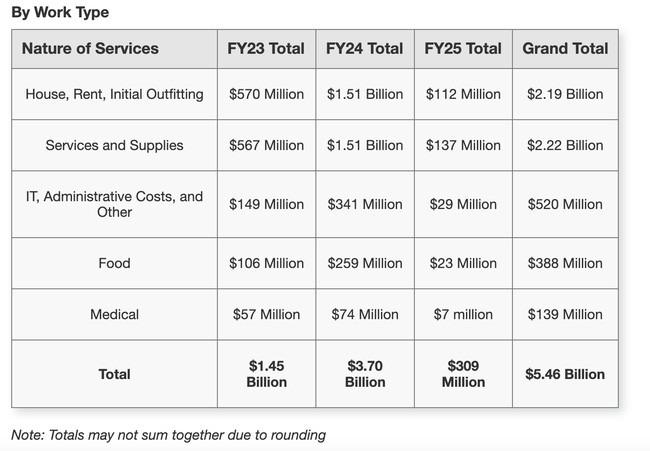The Big Apple’s illegal immigration crisis will likely cost the city more than $5 billion, as taxpayers have spent staggering sums on housing, food, medical costs, and more.
“The Administration has mobilized an all-of-city response that includes the work of more than ten agencies across five service categories,” the Asylum Seeker Funding Tracker notes.
According to the latest data, which runs through July 31, 2024, New York City will have spent a combined $2.19 billion on housing costs, $2.22 billion on services and supplies, $520 million on IT and other administrative costs, $388 million on food, and $139 million on medical expenses through fiscal years 2023, 2024, and 2025.

Recommended
Since 2022, approximately 212,000 illegal immigrants have gone through the city’s system, the New York Post reports, adding that more than 63,900 individuals are still in the shelter system.
While New York City Mayor Eric Adams told reporters this week that he hopes the “worst is behind us," he warned, "we're not out of the woods."
"I want to be clear on that," he added. "We still have to deal with this small number of violent gang members that are in our city. We have to make sure we monitor them and we still have to make sure that we're able to move people out of this shelter type setting."
Adams credited "smart policies" for the drop in numbers, pointing to limiting shelter stays to one month for individuals and two months for families.
"If we would have allowed 212,000 to stay in our care, that would have had a major impact on our budget," he said. "It would have a major impact on just the message we were sending because, you know, people should not grow up in shelters. And so I do believe we're going to see, we are starting to exhale, our fingers are crossed. But we put in smart policies and, you know, the beginning of this operation, people criticize and critique. Why do you do this? Why do you do that? We were inundated in the beginning of this.
"And I think to be able to do what we have done sends a real strong message of the resiliency of the city," Adams continued. "This is a real New York story. And we need to document this story because it needs to be reviewed later as the years go on."


